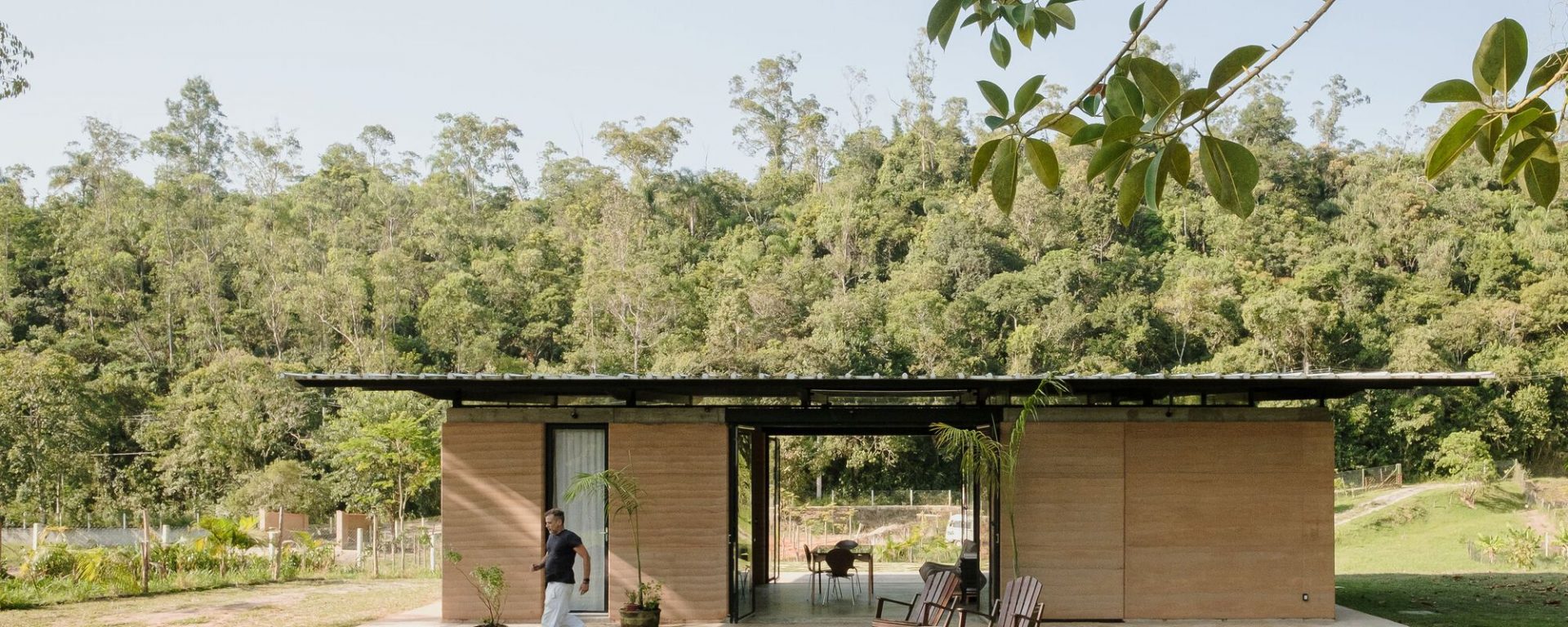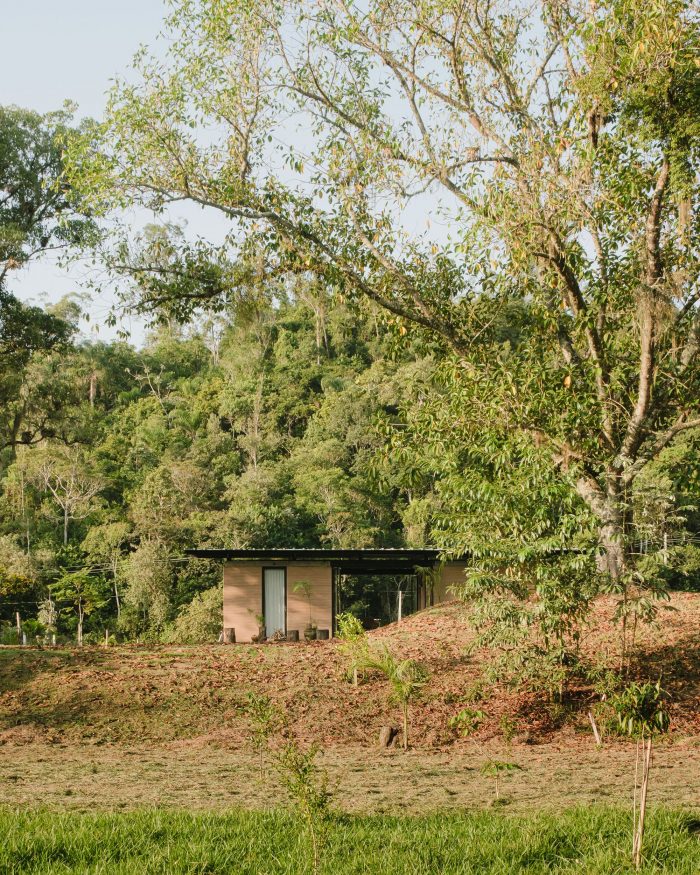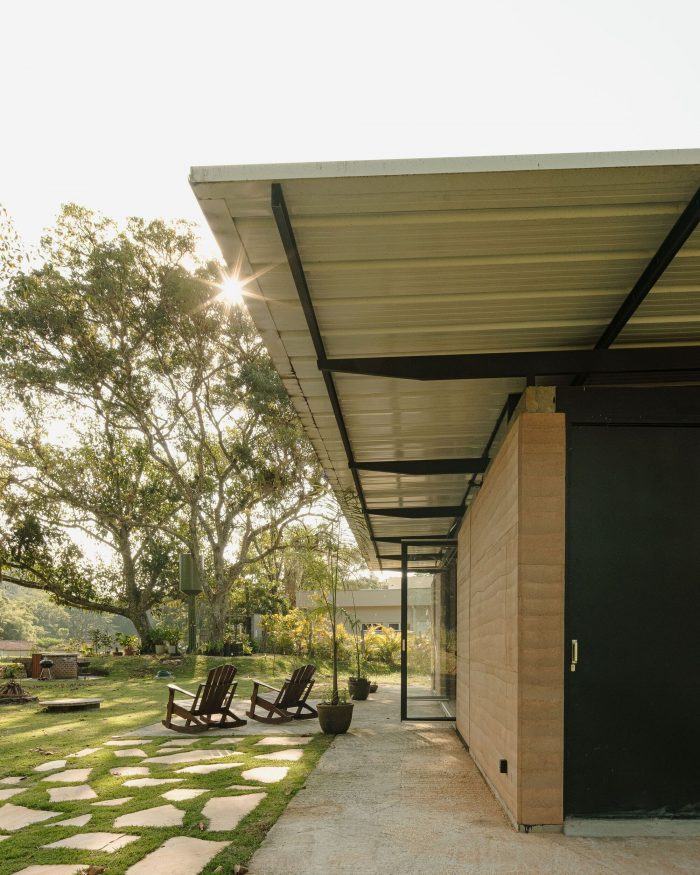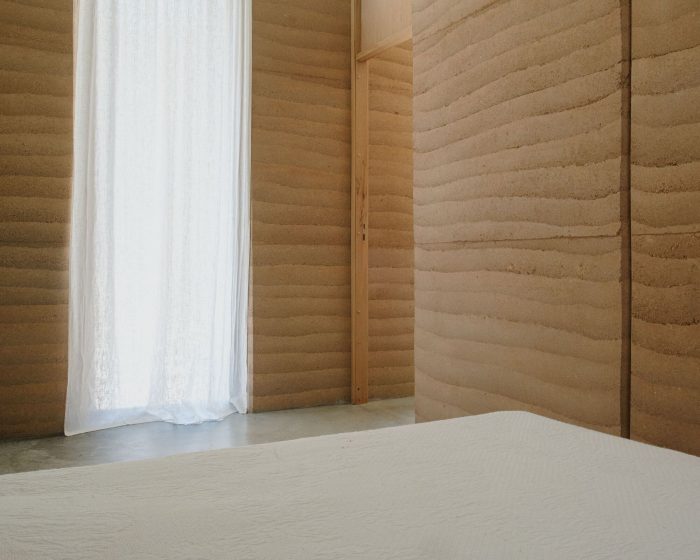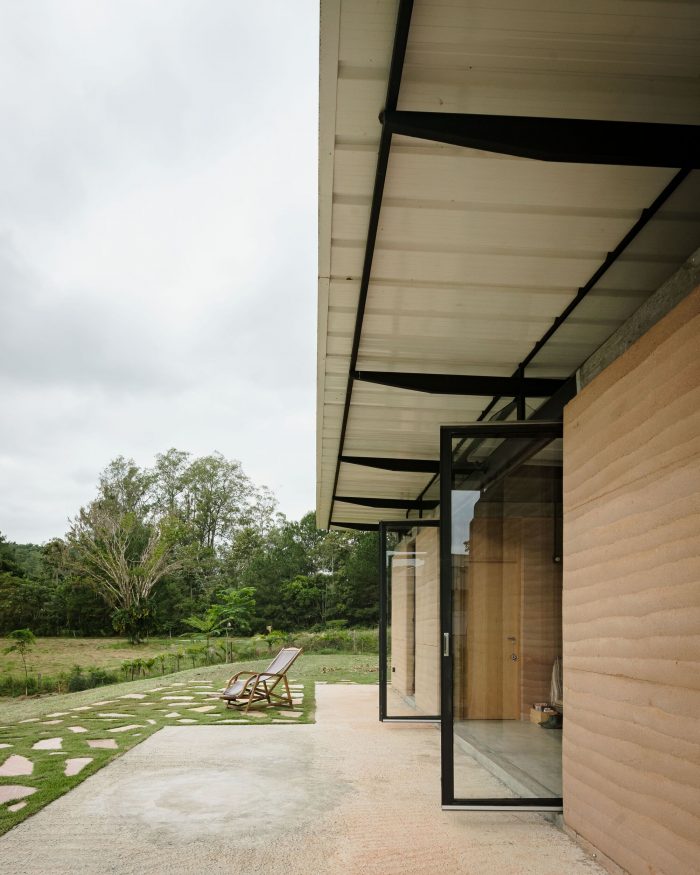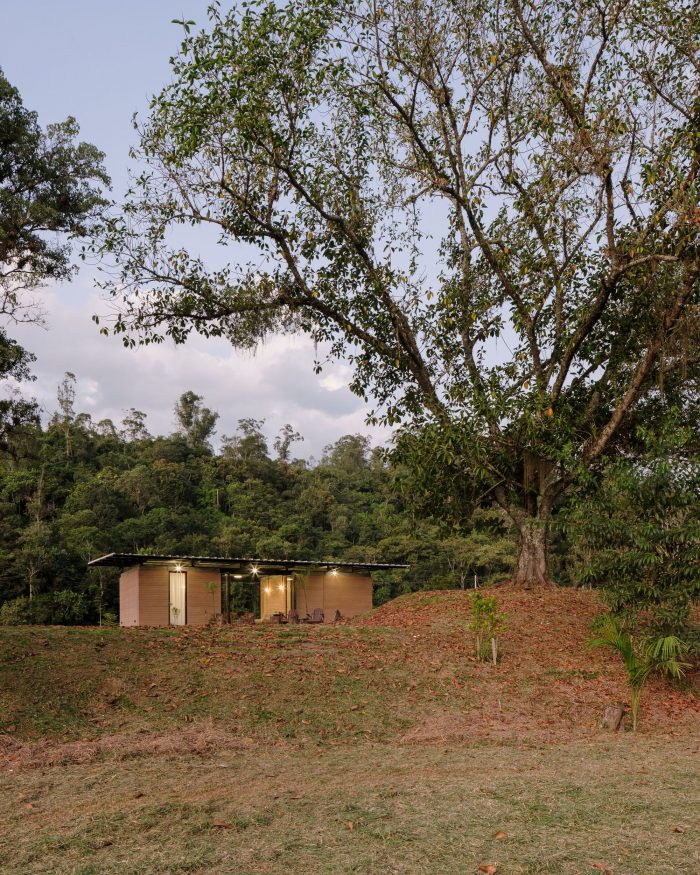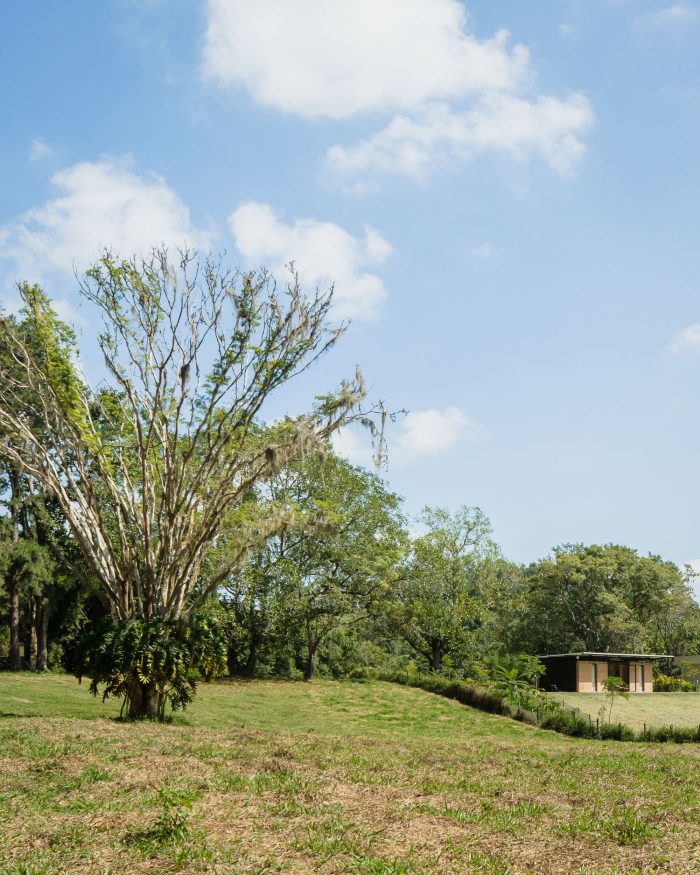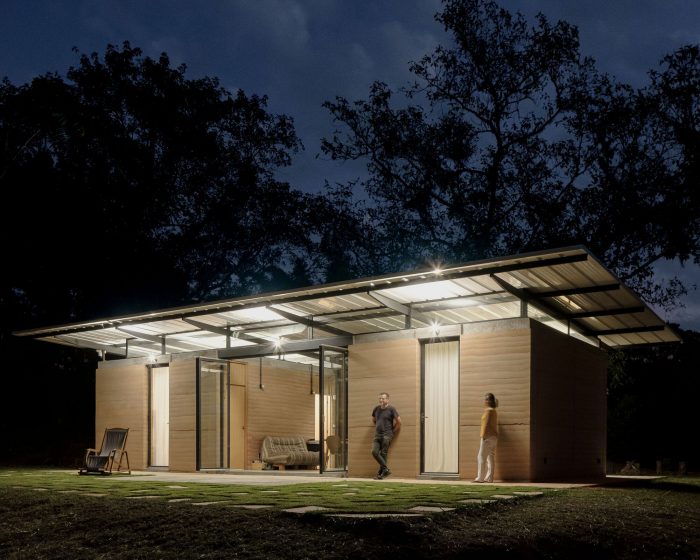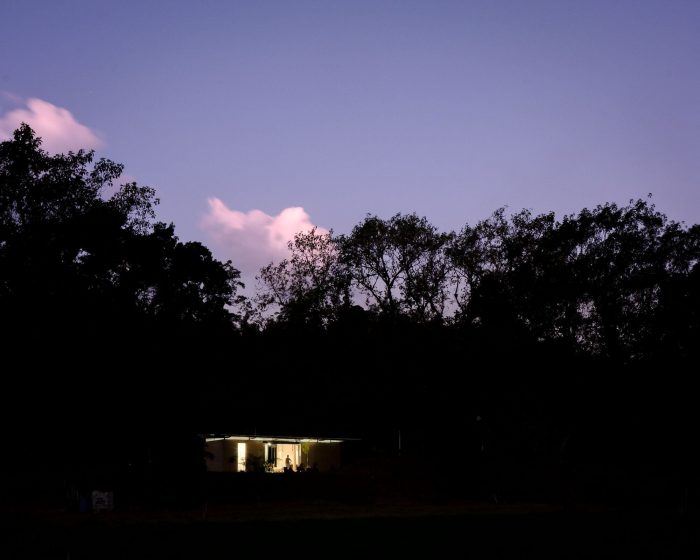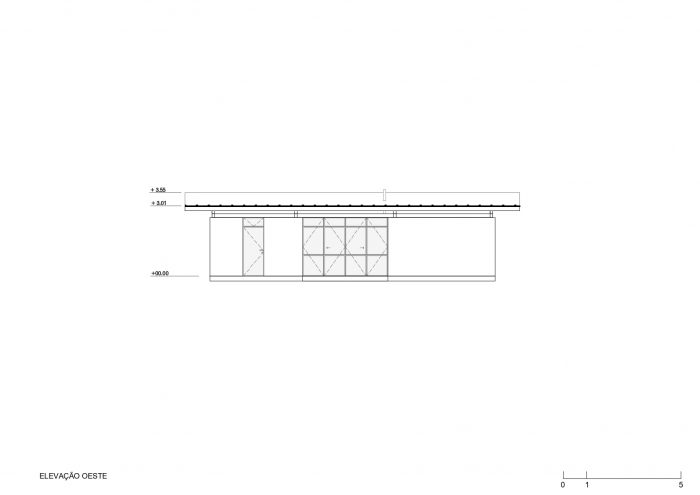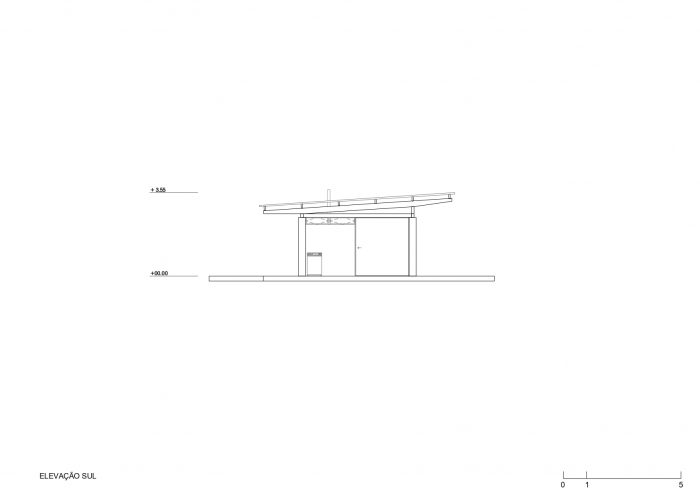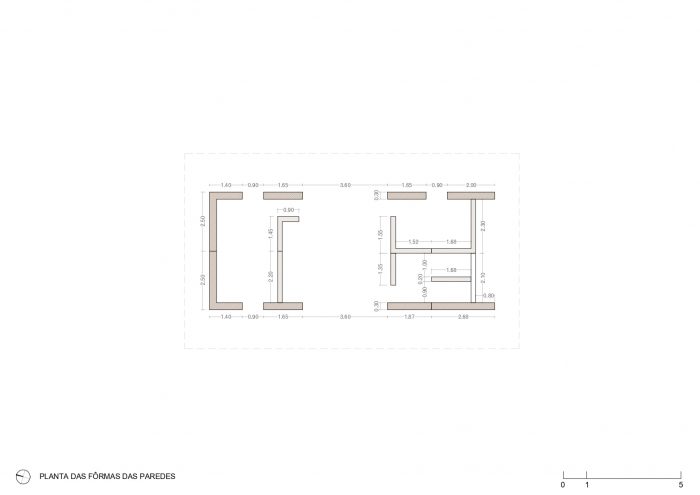该房屋位于Guararema的农村地区。该地块位于南帕拉伊巴河畔,面积为20,845平方米,其中15,000平方米为永久保存区。
The house is located in the rural area of Guararema. The lot, on the banks of the Paraíba do Sul River, has 20,845 m², of which 15,000 m² are destined for the permanent preservation area.
建筑物有60平方米,位于土地的最高部分。主要的开口朝东和朝西,可以分别观赏到原始森林和河岸森林、黎明和黄昏。中央跨度容纳了客厅和厨房,并与外部区域融为一体,成为一个单一的空间,一个大阳台。封闭的
块,具有更适度的开口,有卧室、浴室、服务区和储藏室。
The building has 60 m² and is located on the highest part of the land. The main openings face east and west and allow viewing the native forest and riparian forest, the dawn, and dusk, respectively. The central span accommodates the living room and kitchen and integrates with the external area, becoming a single space, a large balcony. The closed
blocks, with more moderate openings, has the bedrooms, bathroom, service area, and storage.
该建筑再现了被称为culata yovai[1]的农村住房类型,包括”[……]有两个相对的封闭块的建筑,它们之间有一个覆盖的空隙。封闭的区域可以容纳两个卧室、一个客厅、一个储藏室,或者在最近的配置中,厨房。中央空间有多种灵活的用途,既可用于工作,也可用于生活,是一个会议场所和通道场所,构成一个 “房间 “和另一个 “房间 “之间的过渡,或者是外部区域的一侧和另一侧之间的过渡”(BAROSSI, 2005, v. 2, p. 4)
The building reproduces a typology of rural housing called culata yovai [1], which consists of “[…] a construction with two opposed closed blocks, with a space between them covered and hollow. Enclosed areas can house both bedrooms, a living room, a storage room, or, in the most recent configurations, the kitchen. The central space has a varied and flexible use, both for work and for living, being a meeting place and a place of passage, constituting a transition either between a “room” and another or between one side and the other of the external areas” (BAROSSI, 2005, v. 2, p. 4)
建筑的背景和规模为所有墙体使用夯土建筑系统提供了条件。这些封条很厚,很重,很庞大,是逐渐制造出来的,并且具有光滑的质地,显示出每一个坐着的层。这种技术相当古老,但它是用一种更现代的方法进行的。为了提供更大的耐用性,使用了被称为稳定的夯土–SRE的技术,在原有的土壤混合物中加入水泥,以补偿与水接触后可能造成的损害。
The context and scale of the building provided the use of the rammed earth construction system for all walls. These seals are thick, heavy, massive, gradually manufactured, and feature a smooth texture that reveals each seated layer. The technique is quite old, but it was performed with a more modern method. To provide greater durability, the technique known as Stabilized Rammed Earth – SRE was used, in which cement is added to the original soil mixture to compensate for possible damage caused by contact with water.
瓦片和金属梁靠在建筑上,它们的挡板保护外部砖石不与雨水直接接触。框架围住了房子的栅栏,并允许庇护所关闭以抵御天气,或向外展开,用短暂的房间占据土地。
The tiles and metal beams rest on the construction and their flaps protect the external masonry from direct contact with the rain. The frames enclose the house’s fence and allow the shelter to close against the weather or to unfold to the outside, occupying the land with ephemeral rooms.
注意。
安东尼奥-卡洛斯-巴罗西在其博士论文中采用的写法。这种类型被用于 “特别是在巴拉圭,在那里它被认为是该国的典型解决方案。
特别是在巴拉圭,它被认为是该国的典型解决方案,甚至在城市地区也可以找到回忆,它也被报道在玻利维亚、阿根廷北部和
玻利维亚、阿根廷北部和巴西西南部”(BAROSSI, 2005, v. 2, p. 3)。
Note:
Writing adopted by Antonio Carlos Barossi in his doctoral thesis. This typology is used “in particular in Paraguay, where it is
considered a typical solution for the country, and where reminiscences can be found even in the urban area, it is also reported
in Bolivia, northern Argentina and southwestern Brazil” (BAROSSI, 2005, v. 2, p. 3)
Architects: Terra e Tuma Arquitetos Associados
Area : 657 ft²
Year : 2018
Photographs :Pedro Kok
Lead Architects : Danilo Terra, Fernanda Sakano, Juliana Terra e Pedro Tuma
Landscaping : Gabriella Ornaghi e Bianca Vasone Arquitetura da Paisagem
Mud Walls : Terra Compacta
City : Guararema
Country : Brazil

